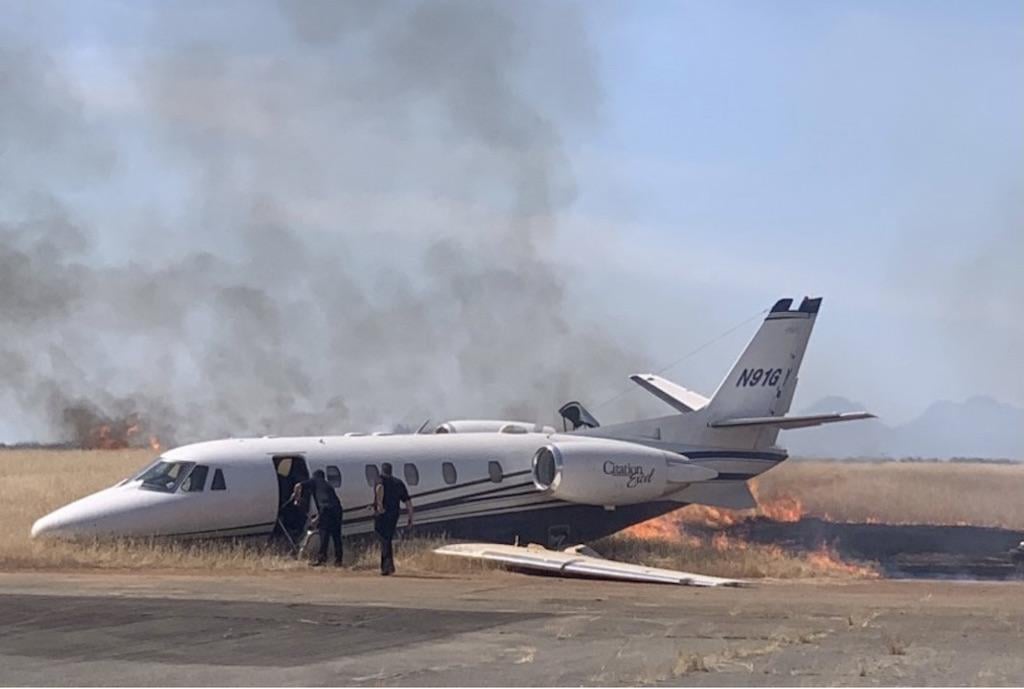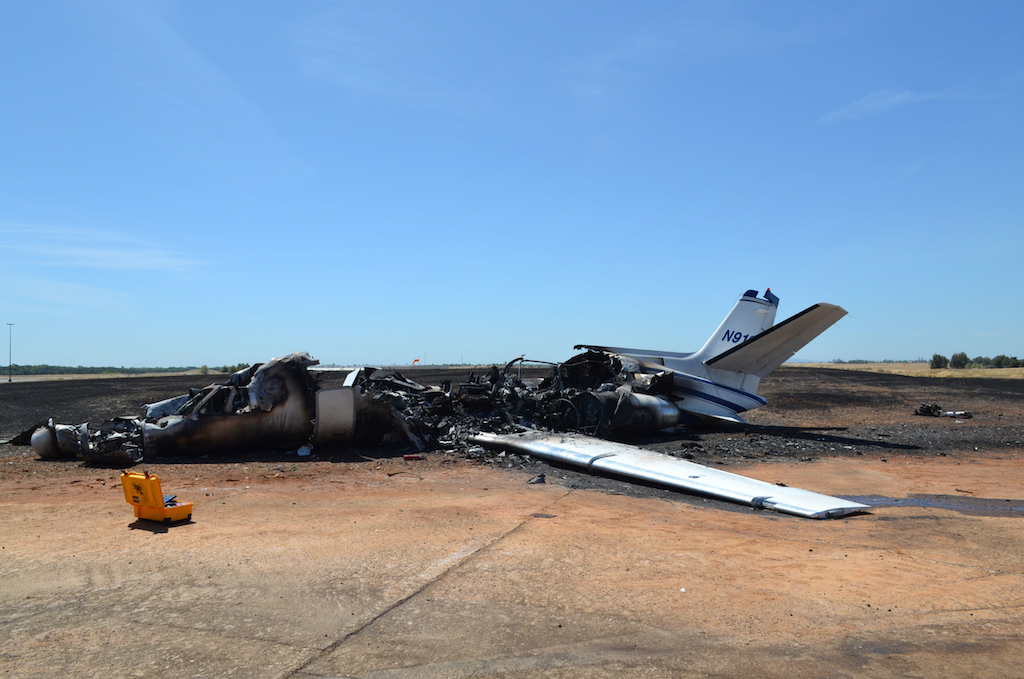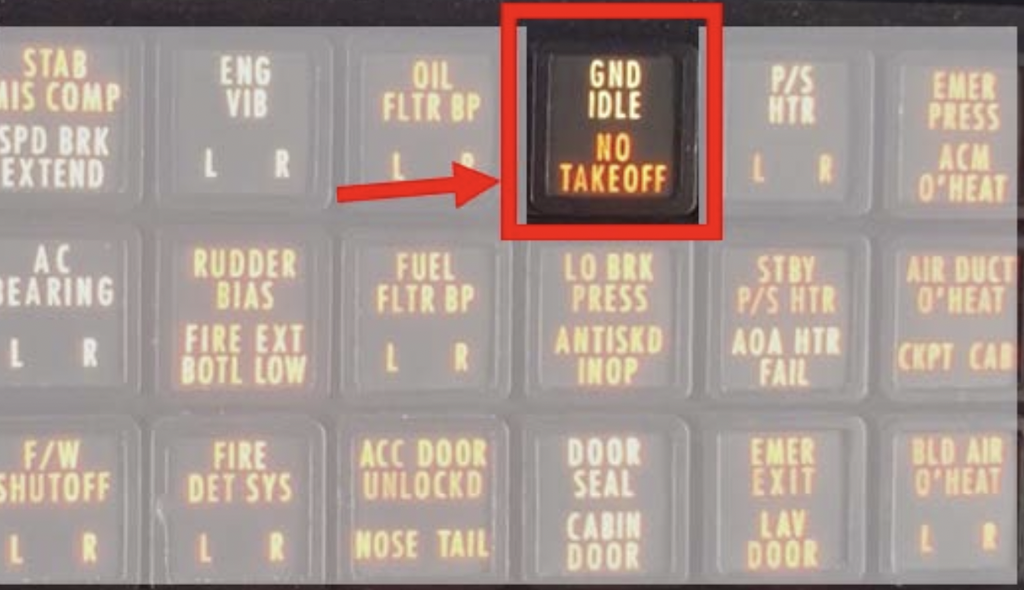
The Cessna Citation 560XL just after its runway excursion at Oroville Municipal Airport.
When a safety agency, a regulator or a manufacturer finds a safety-related flaw in an aircraft, the potential fixes fall into four main categories. Generally, in order of cost and complexity, they are: provide a notice, caution or warning; require specific improvements to training; require changes to checklists or procedures; or require modifications to the airplane itself. Picking the right remedy is important. Doing too much is costly but doing too little can result in an accident.
In the last seven years, several Cessna Citation 560XL crews have attempted to take off with the parking brake set, and manufacturer Textron and the FAA are now contemplating what changes, if any, are necessary to prevent this. The NTSB has already weighed in, recommending both a mandatory system modification and a new checklist item.
The NTSB’s recent action stems from a Sept. 2, 2021 Citation 560XL runway overrun accident near Farmington, Connecticut. The two pilots and two passengers were killed, and four other people were injured when the jet crashed into a building after departing from Robertson Field Airport (4B8) in Plainville, Connecticut. The accident is still under investigation, but the preliminary report says the parking brake was found set, indicating it was not released before the attempted takeoff.
There were at least three previous similar occurrences. A Cessna Citation 550 Bravo overran the end of the runway at Lismore, New South Wales, in 2015 because the crew attempted to take off with partial brake pressure applied by the parking brake. A Citation 560XL rejected its takeoff after V1 in Bauchi, Nigeria, in 2018, apparently due to mishandling of the parking brake. A final report on that case is still pending.
Another Citation 560XL overran the runway end during takeoff from Oroville Municipal Airport (KOVE), California, in August 2019; the NTSB found the parking brake valve was set. The two pilots and eight passengers escaped unharmed, but the airplane caught fire and was destroyed.
The Australian Transport Safety Bureau (ATSB) found that Cessna Citation jets, including the Cessna 550 and 560XL, did not have a cockpit light or message to alert the pilots that the parking brake was set or a checklist item to ensure pilots released the parking brake before takeoff. The ATSB recommended that Textron fix these issues, but Textron responded in 2017 that no action was needed because releasing the parking brake was just a matter of simple airmanship.
Missed Mention To Copilot

The left-seat pilot in the Oroville accident set the parking brake to do a rudder bias check during taxi out, but didn’t mention this to his copilot, who was making a call on his cellphone. He then forgot to release the parking brake when he took the runway for departure. In an interview, he said he believed that the jet wouldn’t move if the brake was set, and takeoff power was applied. He was mistaken.
First, he didn’t apply full force to the toe brakes when he set the brake, so full brake pressure was not applied. Second, the parking brake was not certified to prevent movement at full power on both engines.
The NTSB showed that even with brake pressure applied, the airplane could accelerate on two engines to V1. However, the retarding force between the wheels and brakes resulted in a nose-down pitching moment which resisted the pilot’s attempt to rotate. The aircraft couldn’t get airborne and couldn’t stop on the runway.
The certification standard that applied to the parking brake on the 560XL was established in 1965. It only required that the airplane remain stationary with the brake set and one engine at full power. It also made no mention of a parking brake engaged indication. This standard continued to apply to subsequent Citation models XLS and XLS+, even though the relevant regulation, 14 CFR 25.735, was amended in 2002.
The amended standard added the phrase: “There must be indication in the cockpit when the parking brake is not fully released.”
Parking Brake Annunciator

Beginning in 2002, Textron offered all buyers the option to add a visual and aural annunciation if the parking brake was not fully released. The aircraft already has a “NO TAKEOFF” warning for unsafe flap, elevator trim, horizontal stabilizer, or speed brake position. Wiring in the parking brake to this warning is not a difficult proposition. Both Ireland and the UK have already required just that, and at least eight new aircraft have left the factory with this modification for those markets.
Unfortunately, in the U.S., there have been no takers. Neither the Oroville nor the Farmington accident aircraft was built with the parking brake alerting option.
Given that the design change has already been made, why is an NTSB recommendation even necessary? I can’t say for sure, but apparently the buyers have not been willing to pay for the added safety feature. If the FAA agrees with the NTSB recommendations, the improvement will be required. The FAA has set Aug. 31, 2023, as their target date to reply to the NTSB about this.
Textron’s reply to the Australians that “simple airmanship” was all that was needed seems like it was a reasonable statement at the time. However, the subsequent accidents changed the equation. A brief notice to operators and an added emphasis item in training might have been enough at one time. Now, it seems, more must be done.
It would be nice if every new aircraft owner bought all the safety options, and it would be great if every pilot could be counted on to show good airmanship all the time. Because that hasn’t always happened, the rules must be updated.
The recommendations to the FAA are:
- Issue an airworthiness directive for in-service Citation 560XL airplanes to require that they meet the parking brake indication requirements of Amendment 25-107 of Title 14 Code of Federal Regulations Part 25 section 735. (A-22-8)
- Revise the type certification basis for Citation 560XL jets and future derivative models to require that newly manufactured aircraft meet the parking brake indication requirements of Amendment 25-107 of Title 14 Code of Federal Regulations Part 25 section 735. (A-22-9)
- Require Textron Aviation to include a checklist item on the Citation 560XL pre-takeoff checklist for pilots to verify that the aircraft’s parking brake is fully released before takeoff is initiated. (A-22-10)






Comments